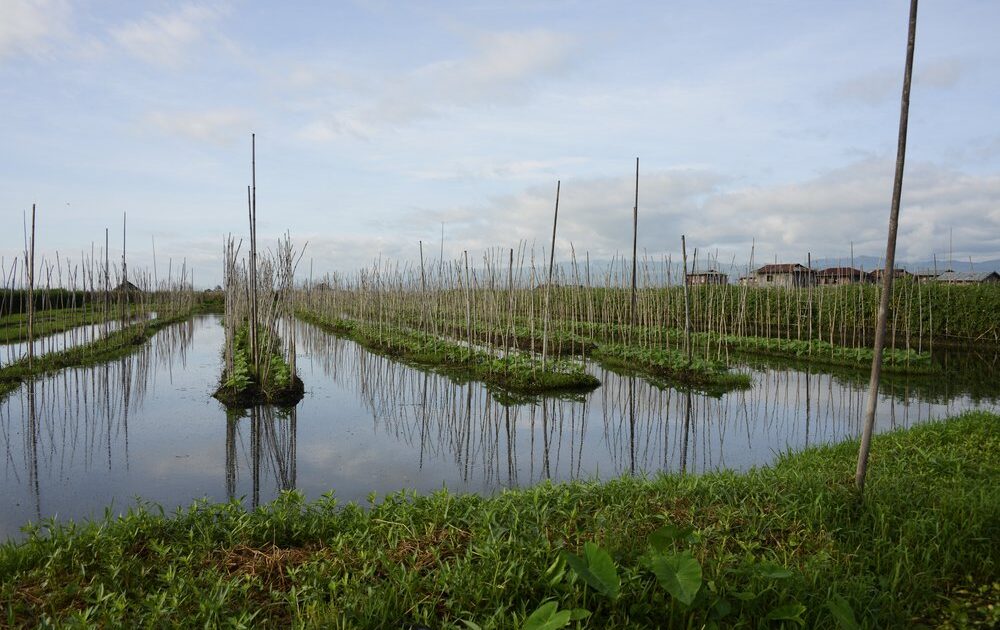Are Floating Farms the Future of Agriculture?

The votes are in: we’re going to be facing a major food shortage problem soon: within many of our lifetimes, in about the next 40 years. Actions must be taken to delay this problem, and include changes to modern farming practices that have been putting stress on the environment and on the world’s food supply. One of the newest ideas that has lips flapping is the idea of floating farms.
But the question on all our minds is how taking farming out of the farms can solve the problem of the world’s hunger?
The actual amount of farmland is shrinking, due to several reasons: The first is urban sprawl, significantly reducing workable farmland in many countries. Another is shrinking coastlines all over the world, from Louisiana to India to Europe. Shrinking coastlines shrink landmass, thus irreversibly shrinking the amount of cultivatable land in the world.
That’s where floating farms come in: where landmass shrinks, the area of the globe covered by water grows. Here are three great examples of people taking advantage of this fact of climate change to promote agricultural innovation and hopefully save our food supply.
1. Re-Training Traditional Farmers in Bangladesh
As early as five years ago, steps were taken by NGOs in Bangladesh to ensure that farmers were able to continue farming, even given the lengthening monsoon seasons in the region. This was significant in Bangladesh, where farming and agriculture make up 62 percent of the labor force, and means had to be taken to rebuild local lives and livelihoods.
In a process similar to hydroponic growing, floating vegetable beds were installed, resulting in an endeavor 10 times more productive than the alternative. But this is actually nothing new for Bangladesh, where floating farms have existed for hundreds of years. Traditional floating farms had been forgotten by many until the new beds were installed, built of water hyacinth and bamboo. They are easy to plant and tend by farmers on boats and are a fantastic example of how a traditional practice can be updated for modern use.
2. An Addition to the World of Urban Agriculture
Barcelona-based Smart Floating Farms has added to the world of urban agriculture with the development of modern, sustainable vertical farms floating on pontoons. The three-level farms designed by the company can produce an estimated upwards of 8,000 tons of vegetables every year — all without the need for rain or soil. The farms use hydroponic systems and renewable materials like rainwater, photovoltaic panels for electricity and natural light via skylight to sustain growth in these man-made farms.
But vegetables aren’t the only food product that Smart Floating Farms can add to the urban agricultural landscape. The farms can also produce more than 1,000 tons of fish every year, thanks to areas on the ground floor including a fish egg hatchery, slaughterhouse and storage room.
Ideal for cities with little fertile land but access to water — which includes many modern metropolises — this structure is a fantastic contribution to urban agriculture.
3. A Vision for an Oceanic Future
Blue Revolution Hawaii takes the idea of ocean farming to a whole other level.
The project got its name — and its idea — from the prediction that shrinking coastlines means that we will have to learn to take even more advantage of the world’s water surfaces than we do today — including not just farming on them, but possibly living on them.
While the project is still in development and looking for investors, it’s one of the largest in scope and one of the most scientifically (rather than politically) slanted, with experts in oceanic energy, aquaculture and farming on board. With the right investors, Blue Revolution Hawaii is prepared to construct a Pacific International Ocean Station as a live- and work-in station promoting ocean development, including furthering the scope of floating agriculture.
We might not see people living on the moon any time soon, but if Blue Revolution Hawaii has any say in it, a lot of us could end up on the ocean.
Related on Organic Authority
Maggie’s Farm Brings Sustainable Agriculture to the Desert with Aquaponics
Greenhouse Grown: The Future of Local Produce?
Floating farm image via Shutterstock

